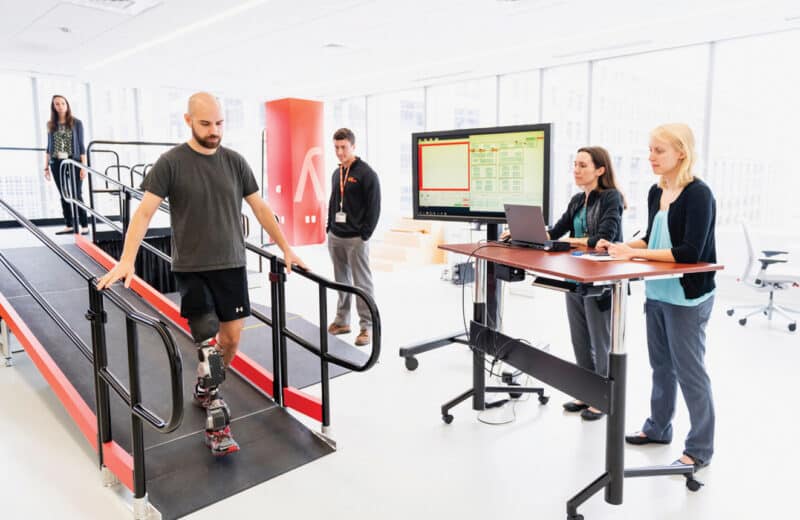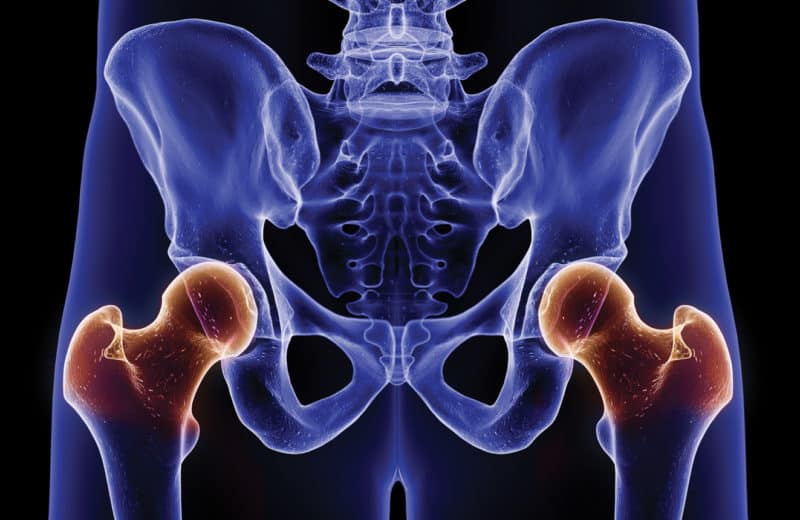Sifting through claims to find the benefits
Jessica Roby was used to pain. As a former gymnast and diver, she had learned to live with it.
“It’s not that I didn’t take it seriously, but being an athlete, you’re in pain a lot because you’re in training. Sometimes, it’s difficult to differentiate between that and something more serious,” Roby says.
Then, one morning as Roby got out of bed, she heard a pop in her neck followed by intense pain that radiated down her left arm and felt as if she had dislocated her shoulder. For the next three weeks, she couldn’t turn her head or use her arm for even the simplest tasks, such as opening a door or carrying her purse.
But Roby’s arm wasn’t dislocated. Multiple orthopedic surgeons confirmed that she was experiencing nerve impingement from herniated discs in her cervical spine, as well as degenerative disc disease in her neck. After learning about each surgeon’s approach, Roby chose Mark Mikhael, MD, an orthopedic spine surgeon at NorthShore University HealthSystem and Illinois Bone & Joint Institute, to oversee her treatment.
In addition to a spinal fusion, a typical treatment for herniated cervical discs, Mikhael had proposed an innovative stem cell therapy. A standard spinal fusion treatment involves removing the discs that are causing friction or nerve compression between the vertebrae and using bone from the pelvis or hip to fuse the vertebrae. But instead of bone, Mikhael planned to use proteins from donor stem cells to promote new bone tissue growth between Roby’s fused vertebrae. The approach is part of a study that Mikhael is conducting on the use of donor stem cells in spinal fusion surgery.
If these signals are working to stimulate bone growth, could we make cartilage? Could we signal nerve growth for spinal cord injury?
In general, stem cell therapies are most common in blood and bone marrow transplantation. Physicians also use stem cells to treat blood and immune system disorders and to rebuild the circulatory system after some types of cancer treatment.
However, research into stem cell applications for bone, skin and eye injuries and diseases is growing. Demand for stem cell therapy among spine patients is increasing, too, especially as more people learn about the benefits.
Promising results
Mikhael began using donor stem cell products in his cervical spinal fusion patients in 2016. He published the results of his initial study — the first of its kind not funded by a stem cell product company — in the June 2017 issue of Asian Spine Journal.
“My goal was that the success rate would be about the same as not using [stem cell product],” Mikhael says. “Our results were a nice surprise.”
A standard spinal fusion of two vertebrae has roughly a 90 percent success rate, and fusing three vertebrae has an 85 percent success rate, he explains. In Mikhael’s study, all 21 patients who received stem cell therapy in addition to their spinal fusion “had radiographic evidence of bone fusion, regardless of age or medical comorbidities. … All patients also returned to work and/or regular leisure activity within three months.” Mikhael’s early results sounded promising to Roby, who had not heard about stem cell therapy for the spine until Mikhael invited her to join his study.
“At first I had reservations. because I’d never been asked to be part of a study and I knew very little about stem cell therapy,” says Roby, a diving coach at Glenbrook North High School in Northbrook.
Mikhael assured her that the potential risks mirrored those of standard spinal fusion treatment. And like most of his other patients, she became eager to participate.
At the time, Roby’s diving team was in the middle of championship season, and she wanted to return to coaching as soon as possible. When the surgery day came, Roby went under general anesthesia and stayed overnight in the hospital. She returned home the next day and was back to teaching and coaching three weeks later.
“I couldn’t lift anything above 15 pounds or drive, but I could sit and watch. I just needed to be able to communicate with [my team],” she says of her coaching work.
Mikhael says he sees the treatment becoming the standard of care for cervical spinal fusions. “I think it’s very promising,” he says. “If these signals are working to stimulate bone growth, could we make cartilage? Could we signal nerve growth for spinal cord injury?”
Evaluating claims
Neurosurgeon Juan Alzate, MD, of the American Center for Spine and Neurosurgery, isn’t quite as optimistic. While stem cell treatments are being used in some specific cancer treatments, their usage for other conditions is just beginning, he says.
The current problem with stem cell therapies, Alzate says, is how to make the cells grow the way you want them to grow. “There are multiple layers of complexity,” he explains, with different types of stem cells serving different functions in the body. “Eventually, what will happen is that you will get some cells from a specific area to regenerate, but they won’t have the connections” to other cells in that area.
Alzate says patients need to be aware that some practitioners are making false promises with regard to stem cell therapies. He warns that patients should watch out for physicians who claim they can use stem cell therapies to avoid surgery.
The International Society for Stem Cell Research helps patients make informed decisions. The group maintains a website that enables people to evaluate claims they hear regarding stem cell treatments.
“Many clinics offering stem cell treatments make claims that are not supported by a current understanding of science,” the website states, advising people to watch out for clinics “looking to capitalize on the hype by selling [non-verified] treatments to chronically ill or seriously injured patients.”
Some caution is needed. “Patients hear the words ‘stem cells’ and think [the physician] is a magician or that it’s like science fiction,” Alzate says. “Stem cell therapies work well in cancer, but right now for spine and brain, it’s just in infancy.”
Mikhael’s study, however, doesn’t make false claims. Rather, it’s part of a growing body of research supporting the use of stem cell therapy used in conjunction with surgery. And for Roby, it worked. Nearly a year and a half later, she says she feels great. “I have no limitations at all. Everything I could do before, I can do now.”













